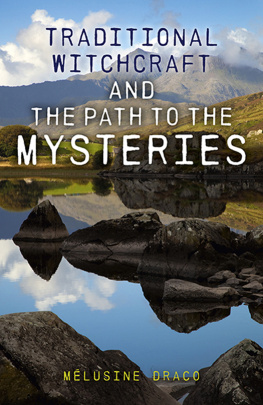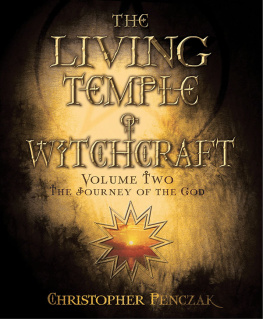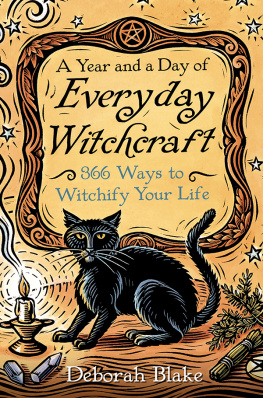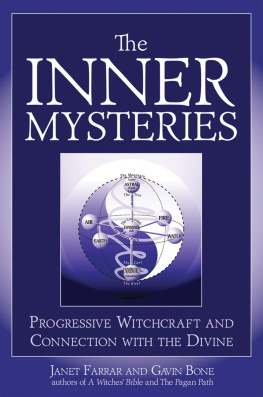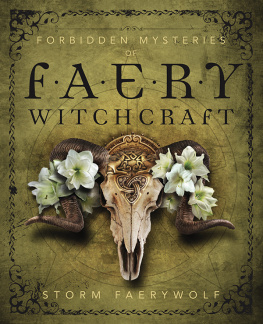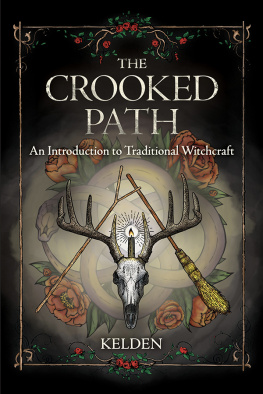About the Author
Mlusine Draco originally trained in the magical arts of traditional British Old Craft with Bob and Mrim Clay-Egerton. She has been a magical and spiritual instructor for over 20 years, and author of numerous popular books on witchcraft and magic. Her highly individualistic teaching methods and writing draw on ancient sources, supported by academic texts and current archaeological findings. www.covenofthescales.com
Her Traditional Witchcraft series is published by Moon Books (an imprint of John Hunt Publishing): Traditional Witchcraft for Urban Living, Traditional Witchcraft for the Seashore, Traditional Witchcraft for Fields and Hedgerows and Traditional Witchcraft for Woods and Forests as well as Traditional Witchcraft and the Pagan Revival together with The Dictionary of Mystery and Magic, Magic Crystals, Sacred Stones (Axis Mundi), By Spellbook and Candle, Aubrys Dog, Black Horse, White Horse and The Atum-Re Revival (Axis Mundi). All titles are available via the publishers US distributors or from the different imprints at www.johnhuntpublishing.com.
Sources and Bibliography
Adams Curse, Bryan Sykes (Corgi)
Atmosphere, Oliver E Allan (Time Life)
The Box of Stars, Catherine Tennant (Bulfinch)
Britain BC, Francis Pryor (HarperCollins)
The Catalpa Bow, Carmen Blacker (Japan Library)
Concise Encyclopaedia of Heraldry, Guy Cadogan Rothery (Bracken)
Continents in Collision, Russell Miller (Time Life)
Coursing and Falconry, Hon. Gerald Lascelles (The Badminton Library)
Earth, ed. Peter Frances (DK)
Edge of the Sea, Russell Sackett (Time Life)
The Essential Difference, Simon Baron-Cohen (Penguin)
Eastern Religions, Ed Michael D Coogan (DPB)
Exploring Spirituality, Suzanne Ruthven and Aeron Medbh-Mara (How To)
Facing the Ocean, Barry Cunliffe (OUP)
The Golden Bough, Sir James Frazer (McMillan)
The Great Religions By Which Men Live, Floyd H Ross and Tynette Hills (Crest)
Honey From Stone, Chet Raymo (Brandon)
The Hollow Tree, Mlusine Draco (ignotus)
The Lore of the Forest, Alexander Porteous (Senate)
Magic Crystals, Sacred Stones, Mlusine Draco (Axis Mundi)
The Mysteries of Mithra, Franz Cumont (Dover)
The Mystical Qabalah, Dion Fortune (Aquarian)
The New Believers, David V. Barrett (Cassell)
The Religion of Ancient Rome, Cyril Bailey (OUP)
The Restless Oceans, A C Whipple (Time Life Books)
Rites and Symbols of Initiation, Mircea Eliade (Harper)
Rivers and Lakes, Laurence Pringle (Time Life)
Seas and Islands, ed Keith Hiscock (Readers Digest)
Secrets of the Seashore, ed Derek Hall (Readers Digest)
Shinto: A Celebration of Life, Aidan Rankin (Mantra)
Traditional Witchcraft for Fields and Hedgerows, Mlusine Draco (Moon Books)
Traditional Witchcraft and the Pagan Revival, Mlusine Draco (Moon Books)
Traditional Witchcraft for the Seashore, Mlusine Draco (Moon Books)
Traditional Witchcraft for Urban Living, Mlusine Draco (Moon Books)
Traditional Witchcraft for Woods and Forests, Mlusine Draco (Moon Books)
The Soul of the Night, Chet Raymo (Prentice-Hall)
Underground Worlds, Donald Dale Jackson (Time Life)
What You Call Time, Suzanne Ruthven (ignotus)
The Winged Bull, Dion Fortune (Aquarian)
The World of Still Water, Robert Gibbons (Readers Digest)
The Journey Ends Twilight Zone
The paper-trail ends here in the twilight zone because, to be honest, thats all weve been following. Despite the fact that we have been seriously following the Path to the Mysteries, we discover there is no book printed that can offer a comprehensive guide to the subject. As we were warned at the beginning, that like smoke from the Abyss, curling tendrils of esoteric jargon cloud the issue until we choke on the obscuring fumes of our own research. Infernal shadows of illusion still hound and harry the unwary along a series of concealing alleyways with conflicting signposts and deliberately obtuse instructions. We follow the rock-strewn pathway, through those endless sloping corridors to a distorted hall of mirrors, where we emerge into the light no wiser than when we first began our quest. We have reached the limit of light penetration into this twilight zone we cannot go further and must also recall Alan Richardsons world-weary words at the beginning:
In magic there are the Lesser and Greater Mysteries. The former are the basic teachings whose intellectual content are available to all. The Greater Mysteries can only be understood through experience; they cannot be taught in words. The best that can be done is to provide symbols that the student may use as lenses to bring into focus his own blurred intimations of something greater in this world than himself. That is why it is useless searching books for any True Secret. It does not exist. Books and teachers can only give a few inadequate methods to reach the wisdom that is nowhere else but within the seeker.
With the benefit of hindsight, however, it may often appear as though we have followed a straight line towards our destiny. That we have moved from person to person, from discovery to discovery, from revelation to revelation but we are still nowhere near our goal. What we will have come to understand is that the Mysteries are not there for the asking; that entry has to be earned over a span of many years. All Traditional Witchcraft and the Path to the Mysteries can do is prepare the seeker for the arduous trials that lie ahead and warn that the pathway is littered with the astral bodies of those who have given up the quest. Perhaps the ultimate revelation is that which has been described as the flight of the alone to the Alone; the realisation that we can be led to the Gateway but we must pass through alone; that there is no one to help us beyond the Gateway once we have passed beyond the threshold of human experience.
When we finally learn how to use our astral senses there should no longer be any confusion, because although Otherworld mirrors certain correspondences with the material one, there is a perfect distinction between the two. Once recognised, these correspondences sing out loud and clear as to their place in the scheme of things and act as signposts on either side of the Gateway. These signposts can be found in the most unlikely places and by using references and examples from other beliefs and cultures, we can often see that truth more clearly. This truth, however, will often be viewed as elitist because as Daniel A Schulke observed: All of these traditions share a common feature of extreme selectivity when it comes to prospective members, and the willingness to reject those proven unfit for the work.
We should also be aware of what might be described as opportunities situations that offer a kensho experiences that we may fail to recognise, or ignore because they do not seem important enough. Once we have embarked upon the quest everything becomes part of the spiritual/mystical ordeal. The main test at this point is the realisation that any incident may have a spiritual significance and if we fail to grasp its importance, to understand that if we do not pursue the opportunity, the way could be shut forever. By failing to appreciate the opportunity at its full value we may miss the supreme chance of a lifetime since the way could be the Gateway to Otherworld that we seek.

